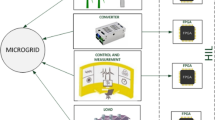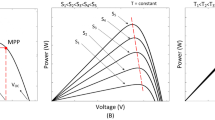Summary
Power Hardware-in-the Loop Simulation (PHIL) constitutes a complex integration of a classical, physical system test (hardware) in combination with a pure computer simulation (software). This article presents methods to reach applicable characteristics of stability and deals with the closely linked issue of the reachable system accuracy under these given circumstances. Basic requirements are stated in a powerful real time computing system, in a suitable power amplification stage, as well as in an adequate measurement system, whereas the performance of the used devices is of crucial importance for the quality of given conclusions based on PHIL simulations. Current areas of applications can be found in the industrial R&D sector or in the state-of-the-art fields of research of electric energy systems and electric drives as well as in advanced power electronics.
Zusammenfassung
Die Power Hardware-in-the-Loop-Simulation (PHIL) stellt eine komplexe Integration eines klassischen, physikalischen Systemtests (Hardware) mit einer reinen Simulation (Software) dar. Dieser Beitrag stellt u. a. eine Methode vor, gute Stabilitätseigenschaften einer PHIL-Simulation zu erzielen, und befasst sich mit dem damit gekoppelten Problem der erzielbaren Systemgenauigkeit. Die Basisvoraussetzungen hierfür sind durch ein leistungsfähiges Echtzeitsimulationssystem, einen geeigneten Leistungsverstärker (Linearität und hohe Bandbreite) sowie ein hinreichendes Messsystem definiert, wobei die Güte der verwendeten Geräte bezogen auf die Dynamik eine entscheidende Rolle spielt, um sinnvolle Aussagen mittels PHIL-Simulationen machen zu können. Aktuelle Einsatzgebiete finden sich beispielsweise im industriellen F&E-Bereich, in der modernen elektrischen Energie- und Antriebstechnik und im Bereich der Leistungselektronik.
Similar content being viewed by others
Literatur
Ayasun, S., Fischl, R., Vallieu, S., Braun, J., Cadirli, D. (2007): Modeling and stability analysis of a simulation-stimulation interface for hardware-in-the-loop applications. ScienceDirect, Simulation Modelling Practice and Theory, 15: 734–746
Hong, M., Horie, S., Miura, Y., Ise, T., Dufor, C. (2009): A Method to Stabilize a Power Hardware-in-the-loop Simulation of Inductor Coupled Systems. Int. Conf. on Power Systems Transients (IPST2009) in Kyoto, Japan, June 3–6, 2009
Ocasnu, D., Gombert, C., Bacha, S., Roye, D., Blache, F., Mekhtoub, S. (2008): Real-time hybrid facility for the study of distributed power generation systems. Revue des Energies Renouverlables, 11: 343–356
OPAL RT eMEGAsim (2010): http://www.opal-rt.com/product/emegasim, real time system description
Ren, W., Steurer, M., Baldwin, T. L. (2008): Improve the Stability and the Accuracy of Power Hardware-in-the-Loop Simulation by Selection Appropriate Interface Algorithms. IEEE Transactions on Industry Applications, 44: 1268–1294
RTDS System: http://www.rtds.com/hardware/hardware.html, real time system description
Weinmann, A. (1995): Regelungen, Analyse und Technischer Entwurf, Bd 1. Wien, New York: Springer
Wu, X., Lentijo, S., Deshmuk, A., Monti, A., Ponci, F. (2005): Design and Implementation of a Power-Hardware-in-the-Loop Interface: a Non-Linear Load Case Study. Applied Power Electronics Conference and Exposition, 2005. APEC 2005. 20th Annual IEEE, 2: 1332–1338
Author information
Authors and Affiliations
Rights and permissions
About this article
Cite this article
Viehweider, A., Lauss, G. & Lehfuss, F. Verbesserung der Genauigkeit und Stabilitätseigenschaften von Power Hardware-in-the-Loop-Simulationen mittels einer Dual-Rate-Schnittstelle. Elektrotech. Inftech. 128, 128–134 (2011). https://doi.org/10.1007/s00502-011-0816-8
Received:
Accepted:
Issue Date:
DOI: https://doi.org/10.1007/s00502-011-0816-8




